The AMD Ryzen 7 8700G has an awful lot to live up to. If you keep up with desktop processor news, you’ll probably have heard tall tales about the last few iterations of Ryzen 7 processors. Word has it these chips shoot lightning bolts out of their cores, their threads might as well be made of stardust, and no other option can stand against their tremendous gaming and content creation might.
The Ryzen 8000G family arrived early in 2024, and people immediately looked to the Ryzen 7 8700G because it was the first chip to bear that name since the somewhat revolutionary Ryzen 7 7800X3D – still touted by many as the best CPU for gaming. Stripped of that chip’s 3D V-cache technology though, this version isn’t necessarily trying to be “better” at gaming, because it takes a slightly different approach.
The ethos of this CPU is to provide people with enough integrated graphics power that they no longer need a separate graphics card in order to own a gaming PC. Of course, we here at GamesRadar+ don’t really believe that, because although you can get by with just a CPU if you’re playing non-demanding games at 1080p, a graphics card is really going to be the sword that knights your rig with its “gaming” status. So, is the Ryzen 7 8700G still worth considering as a performance leap over the Ryzen 5 from this generation, or should you look to AMD’s other options instead?
Specs & Features
A few onlookers weren’t too happy with the specs sheet of this processor when it was first revealed, particularly because there are a few side-by-sides with the AMD Ryzen 5 8600G that don’t exactly warrant its price increase. For example, both processors use the same 16MB L3 cache, and the Ryzen 5 actually has a slightly faster Base Clock speed of 4.3GHz. Admittedly, the Boost Clock speed of the 8700G is faster in a head-to-head, so it’s not all bad. Still, if I were paying more for a Ryzen 7 model, I’d want faster speeds in both categories.
AMD Ryzen 7 8700G Key Specs
Launch date: January 2024
Core count: 8
Threads: 16
L3 Cache: 16MB
Base Clock: 4.2GHz
Boost Clock: Up to 5.1GHz
Max Recommended RAM speed: 5,200MHz (couldn’t post above that in testing)
Integrated graphics: AMD Radeon 760M (12 Graphics Cores, DirectX12, 2900MHz)
Motherboard socket: AM5
Launch price: $229 / £218
GR+’s recommended GPU pairing: For 4K: RTX 4070 / 4070 Super / AMD Radeon RX 7800X
Of course, the internal graphics are going to be a big draw for people with this processor, and with the AMD Ryzen 8700G rocking Radeon 760M graphics, 12 dedicated graphics cores, DirectX12 compatibility, and a graphics clock of 2900MHz, it’ll do as a stop-gap for anyone building one of the best gaming PCs if they’re pulling parts together gradually and waiting for a graphics card. Again, let me stress that as games continue to get more demanding, a dedicated graphics card is going to become a necessity for you, but internal graphics processing power has come a long way, and AMD has been at the forefront of that for a while now.
The Ryzen 8000G family all feature Zen 4 architecture, the same as the Ryzen 7000 range, and as a result, they sit on the same AM5 CPU socket. It may please owners of previous AMD processors that this socket has converted to Intel’s design philosophy to make installation easier. The connecting pins of these CPUs are on the socket, meaning slotting a processor into place is a real breeze, and there’s less risk of you bricking it before your first boot-up.
Up from 6 cores and 12 threads on the 8600G, the Ryzen 7 8700G sports 8 cores and 16 threads. As usual for AMD, this isn’t anywhere near the equivalent Intel processor in comparison. The Intel Core i7-14700K is next on my list of processors to test, and since it’s the direct competitor to this chip in terms of generational tiers, it may surprise you to know that it rocks 20 cores and 28 threads. Even compared to the Intel Core i7-13700K, the Ryzen 7 8700G looks a bit behind the times, with that chip utilizing a similar 16 cores but 24 threads to support them.
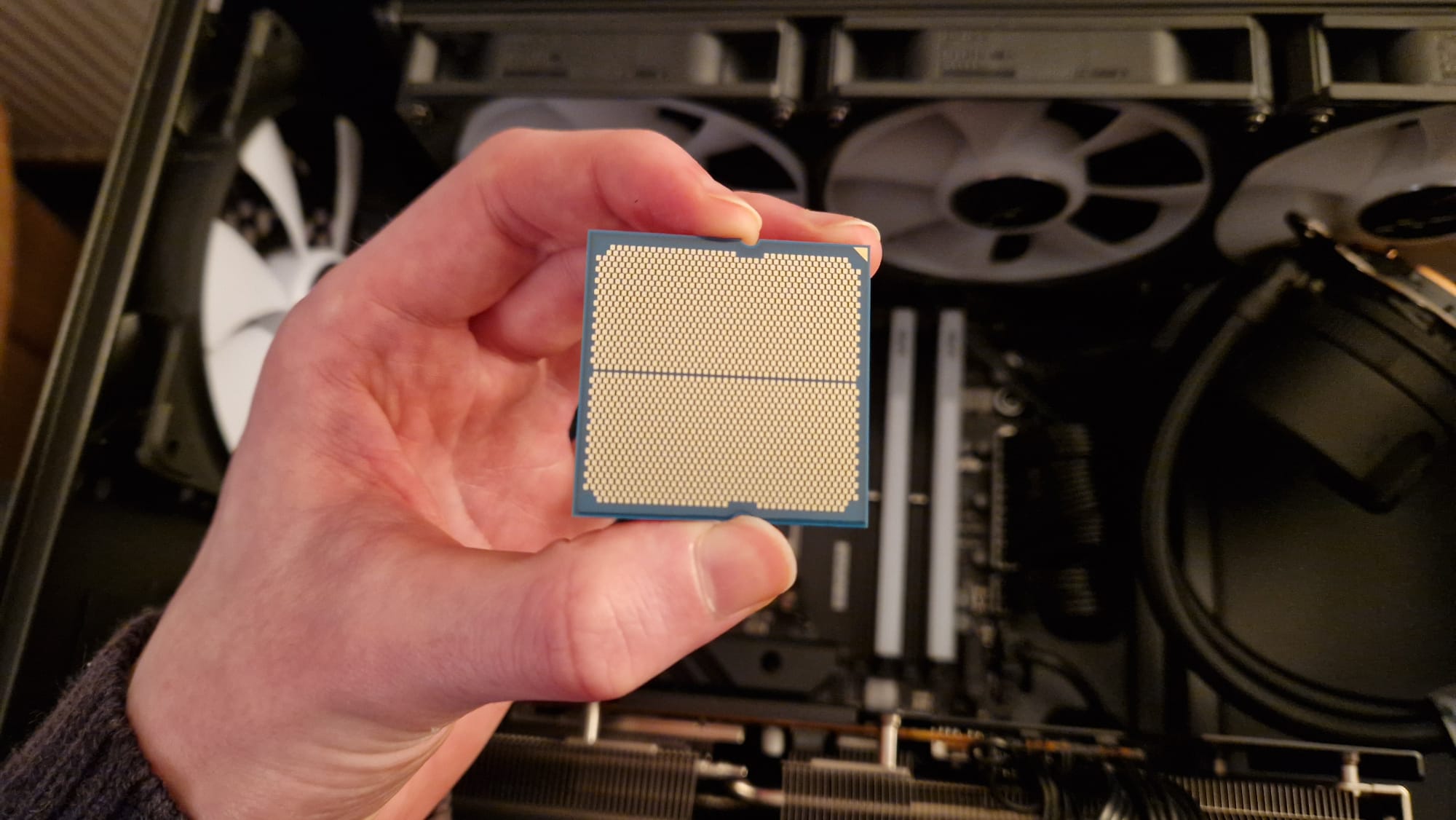
All of that said, the Ryzen 7 8700G comes in cheaper than the Intel competition, especially now that the Ryzen 9000 family has hit the shelves. At launch, this chip would set you back $329 / £270, but it can frequently be found discounted in 2025, with a $255 price tag at Amazon at the time of writing, and a £239 sticker at Overclockers in the UK.
For that money, you get your expected DDR5 compatibility, and if you’re planning on pairing it with the best RAM for gaming, you’ll have all the AMD EXPO abilities you could want to play around with clock speeds and RAM timings. Also in the box is a chunky CPU fan, which is a nice addition considering a lot of desktop processors refuse to launch with them these days.
Performance
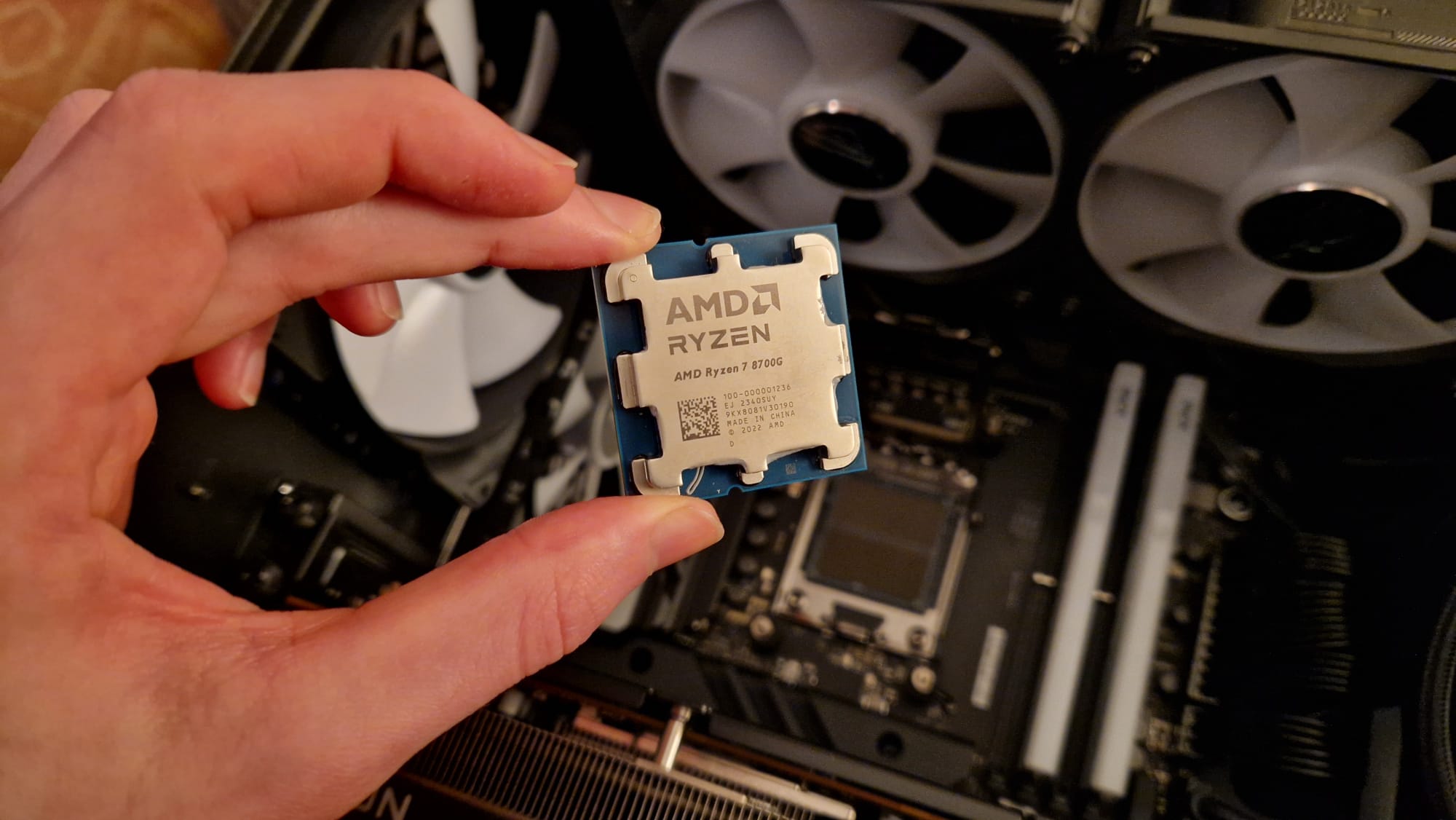
Besides a brief initial test, I put the Ryzen 7 8700G’s integrated graphics power to one side for this review. I was able to launch and play simple games with very few demands like The Red Strings Club, but wavering into deeper territory I struggled. I couldn’t launch STRAFTAT 1v1, for example, and while using integrated graphics I felt the PC slow down more generally, so your mileage may vary here. Regardless my main interest in this CPU is in whether or not it’s capable of offering decent performance when paired with a GPU, and whether or not it gives enough of a gaming boost compared to the more affordable Ryzen 5 8600G.
Single-core performance, content creation, and staying cool under pressure are going to be big benefits for some users, but if anything, this review just goes to show how good the Ryzen 5 8600G is for its price.
For that reason, I decided to stick to the exact same set of benchmarking games as I did for the Ryzen 5. I would usually perform the same formal benchmarks with a few different games thrown in for good measure, but I was curious to see how both processors would compare directly, especially running gaming tasks at 4K.
Before getting to the gaming stage though, I have a quick caveat to address. Although I do all my CPU testing these days with RAM set to 6,000MHz, I couldn’t get this processor to post above the advertised 5,200MHz recommended speed from AMD. This was despite having the same RAM set to 6,000MHz during my Ryzen 5 review, which is a bit strange. I’m unsure whether this is our AMD testing motherboard being quirky, or a fault of the CPU, but nonetheless, it’s something to be wary of if you end up choosing this processor.
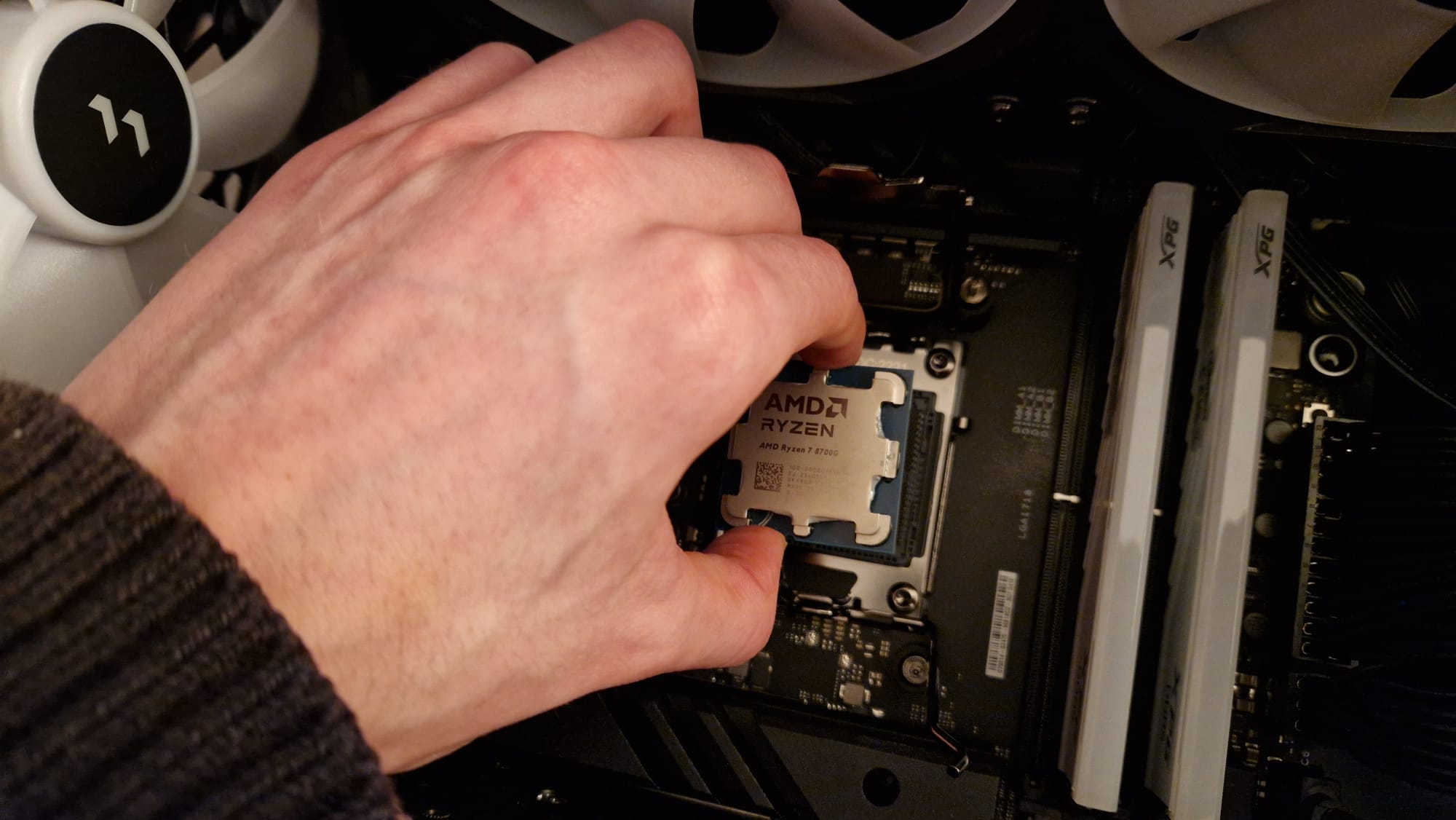
To get the CPU warmed up before jumping into gaming benchmarks, I ran it through Cinebench and Blender’s assault courses. To tell the truth, having not been too pleased with the Ryzen performance in these benchmarks in either the Ryzen 5 8600G or the Ryzen 7 7800X3D housed in the Maingear Zero Ruby, I didn’t have high expectations. With the scores the 8700G produced though, I was pleasantly surprised. Yes, they were tested in different systems, but the Maingear Zero Ruby’s processor (3D V-cache and all) scored a Single Core Cinebench result of 1829 pts. The 8700G showed on-par Single Core performance with 1821 pts.
I’m used to the Cinebench tests making chips audibly sweat, with fans kicking up to high heaven, but in both the Single and Multicore benchmarks for the Ryzen 7 8700G, it didn’t peak above 73 degrees, which is cooler than its smaller sibling Ryzen 5 – and that’s while using the same cooler. In fact, this chip needs to be commended for its temperature control, because there wasn’t a stress test I threw at it where it went above 73°C, with ambient temperatures being as low as in the 20s, and average gaming temperatures sticking around the 40-50°C mark. Could this extra cooling performance be down to the different thermal pastes applied? Potentially, but the fact this processor is capable of staying so cool compared to Intel’s equivalents is a massive boon.
| Cinebench Multicore: | 18158 pts | 73°C |
| Cinebench Single Core: | 1821 pts | 45°C |
| Blender Monster: | 105.469593spm | 60°C |
| Blender Junkshop: | 71.485636spm | 61°C |
| Blender Classroom: | 52.251484spm | 60°C |
Next, it was time for some gaming tests, and since I discovered in my Ryzen 5 review that unexpected 4K performance was the name of the game, this Ryzen 7 was going to be thrown through the same wringer.
| Specs | Campaign Benchmark | Battle Benchmark | Mirrors of Madness Benchmark |
| Peak Temp | 34°C | 40°C | 44°C |
| Core Voltage | 1.41V | 1.41V | 1.40V |
| Peak percentage used | 7% | 7% | 8% |
| FPS | 45fps | 53fps | 42fps |
As you may expect from the spec comparison, this chip performed very similarly to the Ryzen 5 in these benchmarks, likely due to the exact same L3 cache and slower base clock. What’s interesting is that the Ryzen 7 ran cooler, and had a much lower percentage of use than the Ryzen 5, but both produced almost identical frame rates. The 7 8700G of course had higher power demands, as you may expect from a higher-tier product.
These weren’t the only games I tested in though, and before you go thinking that there’s literally no benefit in buying this CPU, let me tell you about where 4K gaming results were improved. Planet Zoo, for example, running the exact same scenario as in my Ryzen 5 review, came out with a rock solid 4K 60fps result. With the Ryzen 5, I got 59fps but wasn’t what I’d call steady. It needed some settings dialed down in order to achieve the 60fps “playable” mark. Yes, this Ryzen 7 was only a slight improvement, but it did make a fairly tricky city builder run very smoothly indeed.
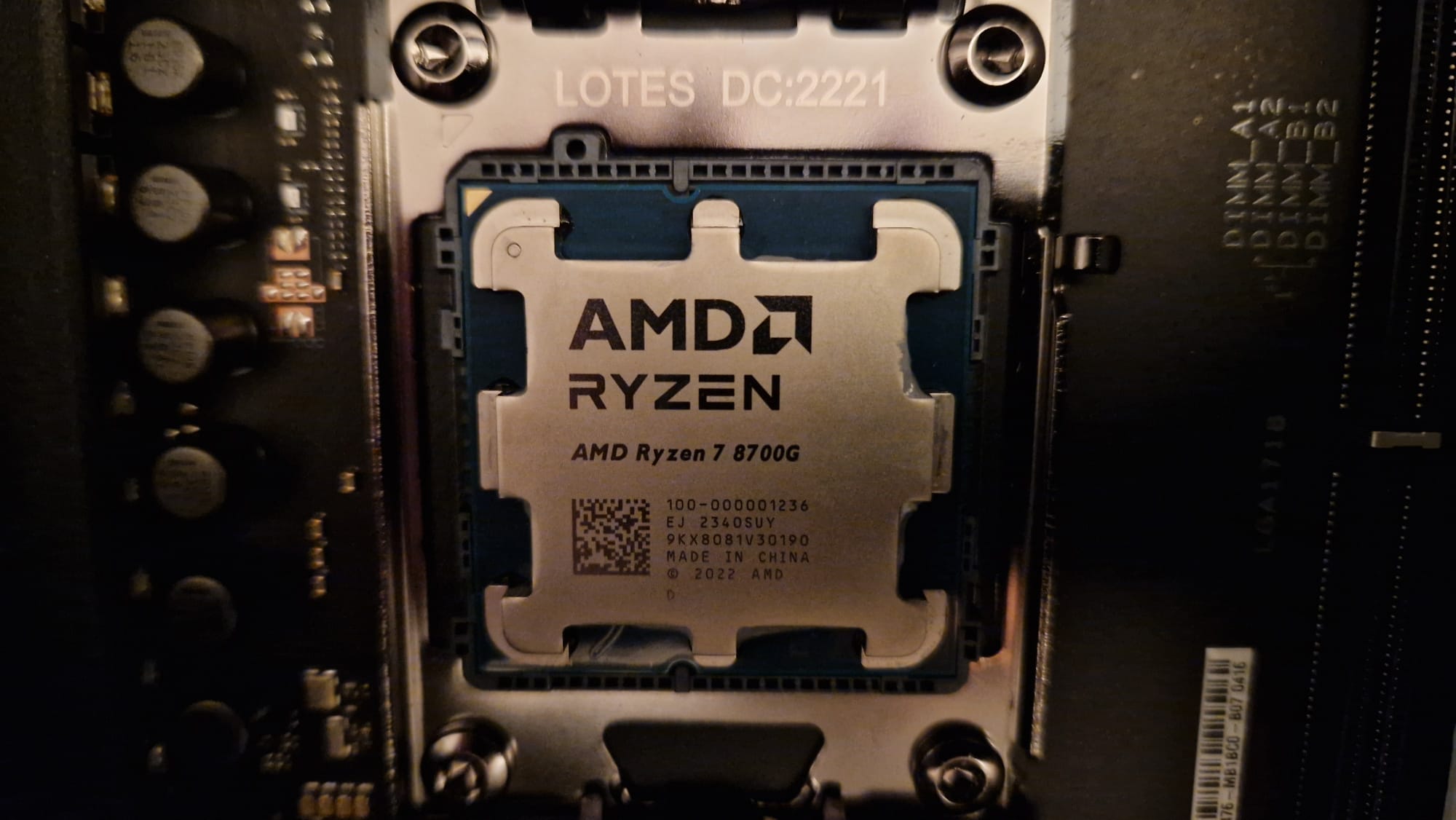
Homeworld 3 was a similar story. The Ryzen 5 scored 45fps in its benchmark with every setting set to its highest, and although I had to scale back a few settings to really get it up to 60fps, the Ryzen 7 had a 10fps boost out of the gate, scoring 56fps at the highest settings.
And finally, it was time to put the Ryzen 7 to the test in some less-optimized gaming scenarios. Cities Skylines has some incredibly demanding fan-made scenarios, and if I were shopping for a new CPU these days knowing I was going to point it at these types of games, I’d want an idea of how they’d be handled. Keep in mind that the following results aren’t as formalized as the benchmarks in Total War, since they’re an average taken from playing rather than a standard benchmarking test.
| Row 0 – Cell 0 | Belmont City Transport Scenario | Paradise Coast Traffic Scenario | Presidente Los Santos Scenario |
| Peak Temp | 36°C | 44°C | 46°C |
| Peak percantage used | 8% | 5% | 8% |
| Average FPS | 53FPS | 47fps | 48fps |
There are slight improvements over the Ryzen 5 here, particularly in the percentage used, and how stable the frame rates were while playing. Still, the story of the numbers here shows that there really isn’t as much of a performance gain for this Ryzen 7 when it comes to gaming. Single-core performance, content creation tasks, and staying cool under pressure are going to be big benefits for some users, but if anything, this review just goes to show how good the Ryzen 5 8600G is for its price.
Should you buy the AMD Ryzen 7 8700G?
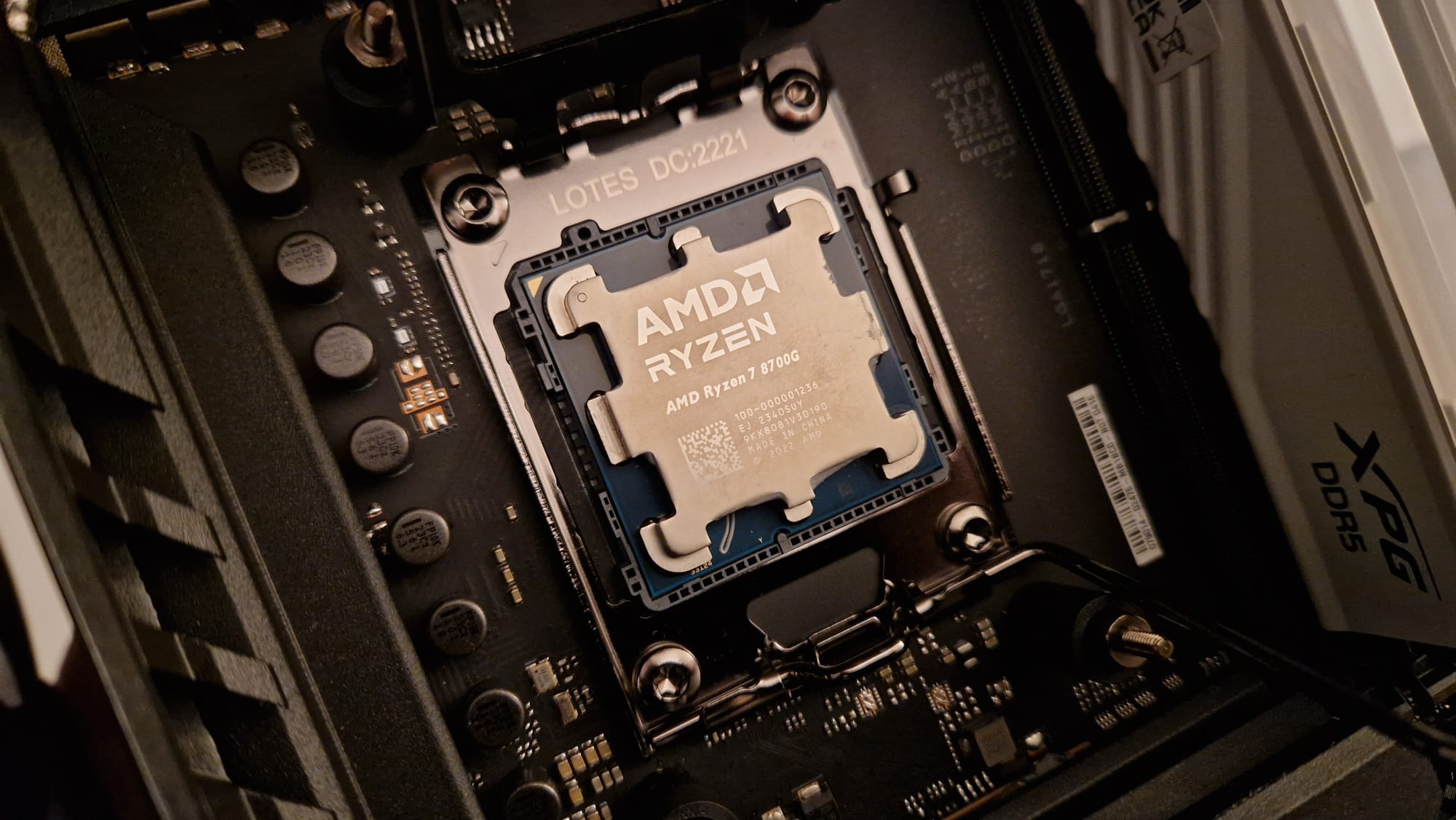
For its lack of gaming performance boosts over its Ryzen 5 sibling, there are still reasons I’d recommend the Ryzen 7 8700G. First of all, if you’re building a gaming PC and you can’t get a graphics card right away, or you’re mainly building a PC for work and you’re only planning on playing some cozy games every once in a while, this might be enough for you until you want some upgrades. If you plan to branch out above 1080p though, maybe don’t set your expectations too high.
If you like the look of the Ryzen 5 8600G but do more content creation, this Ryzen 7 gives you the extra headroom I felt the Ryzen 5 from this generation was missing. Keep in mind, too, that this went toe-to-toe with the Ryzen 7 7800X3D in Cinebench and Blender, so there’s some really decent performance to have here without spending extra money on a 3D V-Cache option.
Overall, you do get a solid Ryzen 7 processor from the 8000G family, although to sound like a broken record, the majority of gamers will get by just fine without spending the extra money on it. If you don’t tend to play many city builders or RTS games, save your money and opt for the Ryzen 5. The 8700G feels more like a slightly souped-up version of that processor with more of a focus on single-core performance and integrated graphics. I’ll let you be the judge of which one would suit you better, although with either you’ll be saving money versus Intel.
How I tested the AMD Ryzen 7 8700G
After installing the AMD Ryzen 7 8700G inside our AMD testing PC, I put it through our usual gauntlet of demanding CPU benchmarks. This includes industry-standard software like Cinebench and Blender, as well as city building and RTS games that processors need to simulate a lot of moving parts.
I used HWinfo to keep a close eye on voltages and temperatures and tracked average frame rates and percentages of use through Windows Game Bar and MSI afterburner. I compared my experience closely to my tests of the Ryzen 5 8600G since the two are part of the same family and were reviewed using the exact same testing process.
The rest of the components used in this test were as follows:
- CPU Cooler: Asus ROG Strix LC III 360 ARGB
- CPU thermal paste applied: Prolima Tech PK3 Nano Aluminum High-Grade Thermal Compound
- Chassis: Fractal Meshify 2 RGB
- Number of fans: 3 intakes, 4 extractors, 1 radiator
- GPU: AMD Radeon RX 7900 GRE
- RAM: XPG Lancer Blade DDR5 RGB
- Motherboard: ASUS ROG Crosshair X670E Hero
- PSU: Corsair RMx Shift Series RM850x ARX PS
For more on how we test, check out the full GamesRadar+ Hardware Policy.
There’s more where that came from. Check out the best computer speakers, the best graphics cards, and the best Alienware gaming PC.





